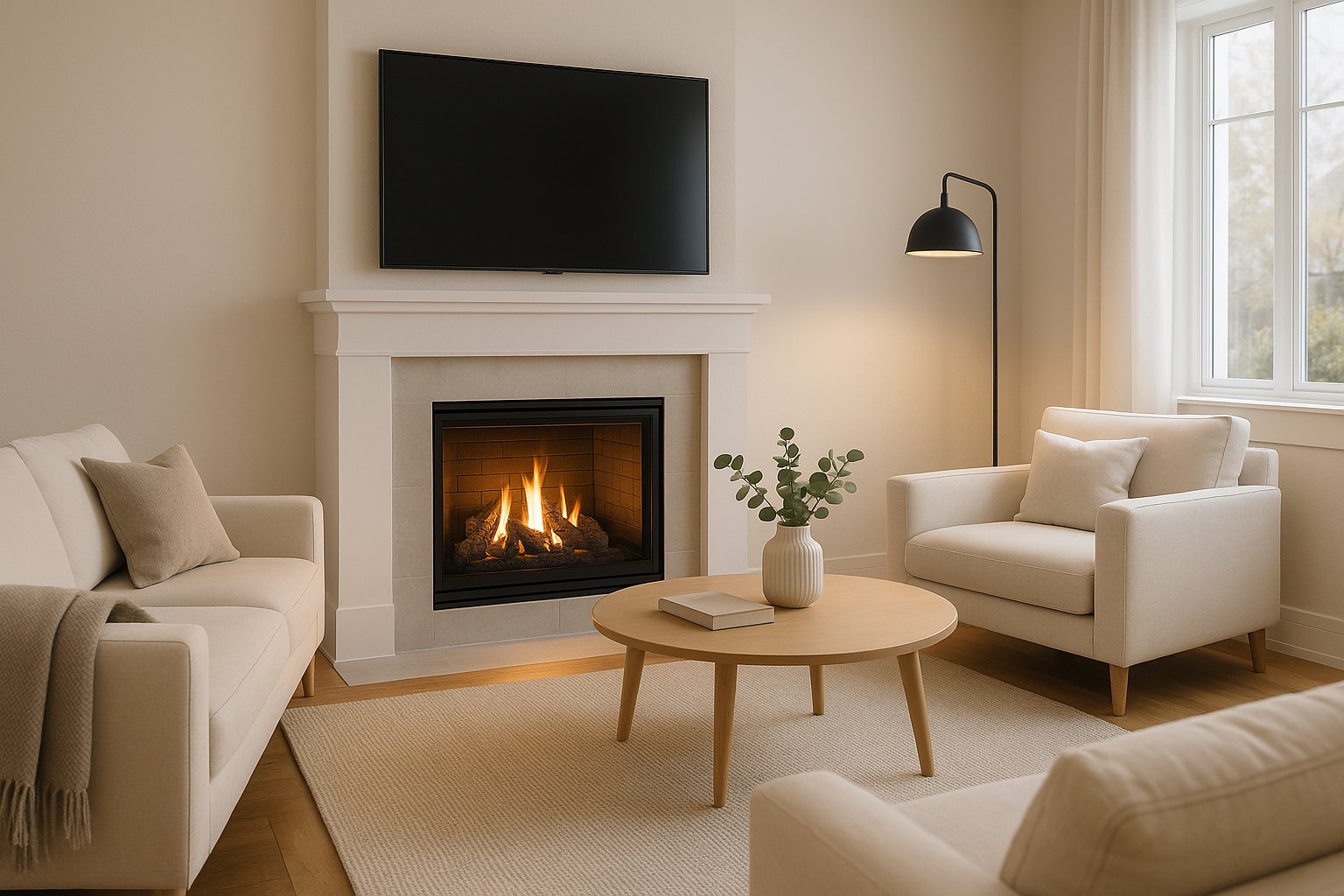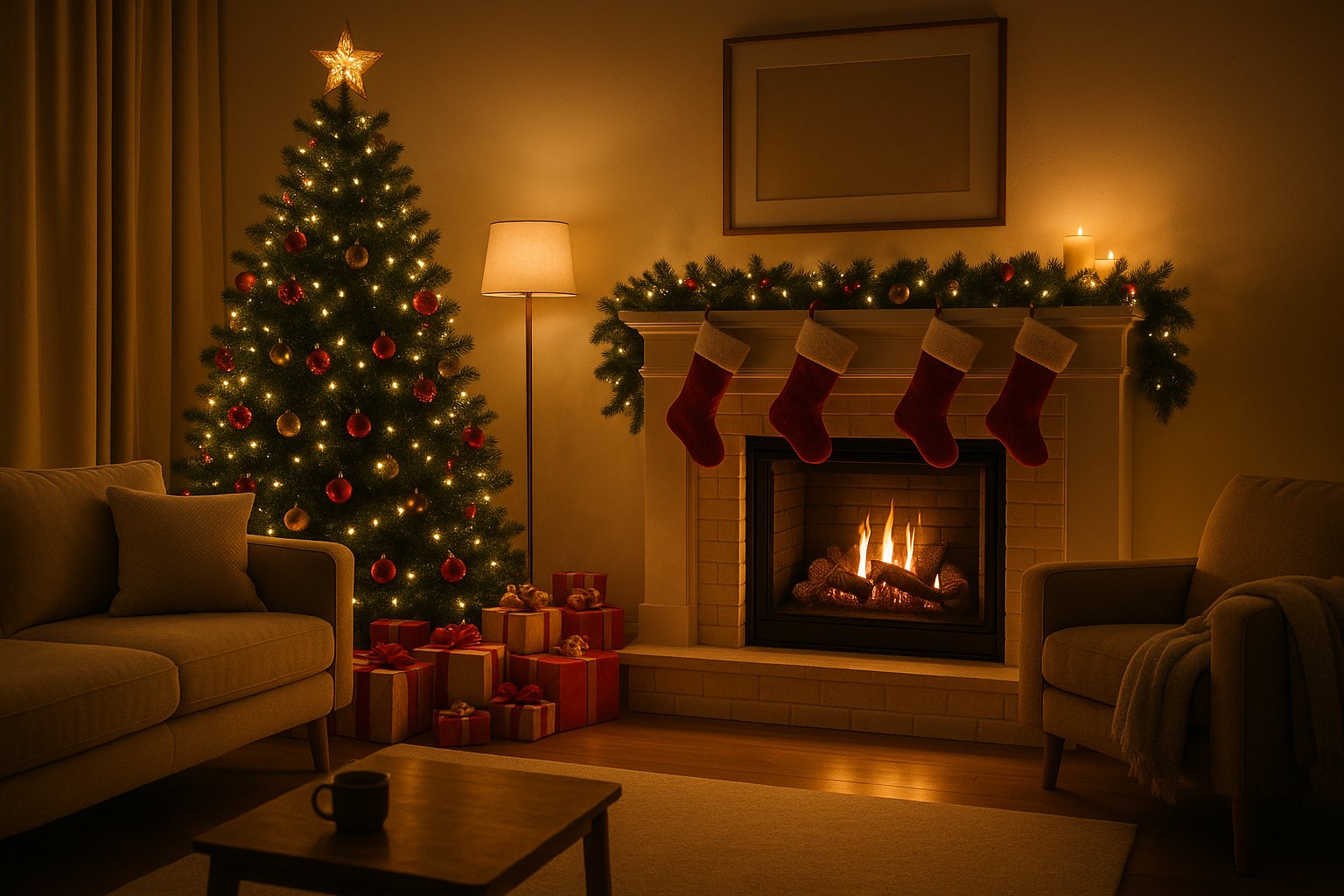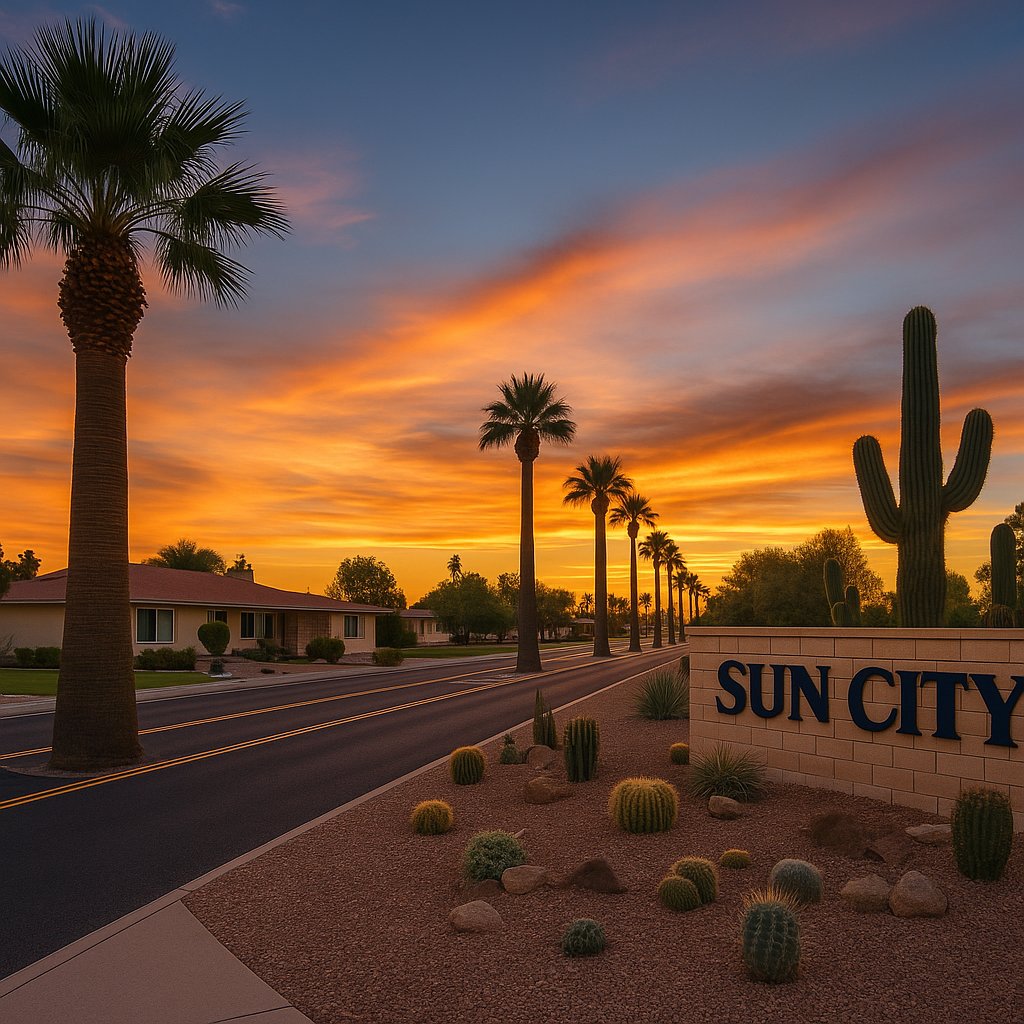A gas fireplace should start easily, burn clean, and heat the room without a struggle. If it fails to light, produces soot, or gives off a gas odor, it needs expert attention.
A gas fireplace should start easily, burn clean, and heat the room without a struggle. If it fails to light, produces soot, or gives off a gas odor, it needs expert attention. Homeowners often search gas log fireplace repair near me and get a mix of chimney sweeps, handymen, HVAC contractors, and plumbers. Not all are the right fit. In Sun City, AZ, the safest and most reliable choice for gas fireplaces is an HVAC and gas appliance technician who works with combustion, venting, and code compliance every day.
This article explains who to call, what services matter in Sun City’s climate and building stock, and how Grand Canyon Home Services approaches repair and maintenance so the fireplace runs safely and looks and feels as it should.
Who actually services gas fireplaces in Sun City, AZ
Three trades show up again and again. First, HVAC companies handle gas burners, safety controls, and venting on furnaces and water heaters. That experience translates directly to gas fireplaces. Second, licensed plumbers run gas lines and set regulators and shutoff valves. They are the right choice for gas supply problems like undersized lines or leaks but may not diagnose control boards or ignition modules. Third, chimney firms know venting physics and exterior terminations. Some are excellent with gas inserts, others focus on masonry flues and wood systems.
A practical rule helps. If the problem is ignition, pilot, thermocouple or flame sensor, control module, combustion air, or soot, call an HVAC gas fireplace specialist. If a gas leak or new gas line is required, a plumber should be involved. If the chimney cap is damaged, the liner is clogged, or exterior terminations are failing, a qualified chimney tech steps in. Many repairs overlap. A full-service HVAC company like Grand Canyon Home Services coordinates these pieces so the homeowner makes one call and gets one accountable team.
Common gas fireplace problems seen in Sun City homes
Local conditions shape failure patterns. Sun City has dry air and fine dust. That dust coats burners, clogs pilot hoods, and insulates flame sensors. Annual cleaning prevents most no-ignite complaints. Hard water minerals can also crust over glass edges if the panel is cleaned with tap water and not dried properly, leading to staining and poor viewing.
Another frequent issue is low gas pressure. Neighborhood line pressure holds steady, but appliance pressure can drop when multiple devices run at once. A 40,000 BTU fireplace fed by a long, half-inch branch line from a tee that also serves a furnace may starve during winter evenings. The fireplace then lights weakly, the flame lifts or rolls, and soot forms on the logs and glass. Pressure testing at the appliance tap shows the truth within a minute.

Intermittent shutoffs often trace to a weak thermopile or a dirty flame sensor. In direct-vent models, a blocked intake or exhaust cap will mimic a safety failure. Birds’ nests in spring, or a screen matted with lint and spiderwebs, can trip the pressure switch and kill the flame. On vent-free units, a wandering or orange flame signals dust and low oxygen; the oxygen depletion sensor reacts and shuts down the system for safety. These devices are sensitive by design.
Finally, owners report rotten-egg smells. Utility natural gas is odorized with mercaptan. A faint smell during lighting may be normal, but persistent odor means a leak. Shut the gas off at the valve, open windows, and call for service. This is not a DIY moment.
What qualifies a reliable gas fireplace technician
Strong credentials matter more than a shiny ad. Look for an Arizona ROC license that aligns with HVAC or plumbing work and workers trained on gas controls and venting. Insurance and bonding protect the homeowner. Ask about factory training for brands such as Heatilator, Napoleon, Regency, Majestic, and Valor. A good tech will explain model differences. Standing pilot systems use thermocouples and thermopiles; electronic ignition models use flame rectification sensors and ignition control boards. Each requires different testing tools and methods.
A technician should measure, not guess. That means using a manometer for inlet and manifold gas pressure, a combustion analyzer for CO and draft when applicable, and a microammeter for flame sensor current on some electronic systems. Visual checks have value, but numbers confirm a safe fix. On vented models, draft and make-up air matter. The tech must evaluate the termination cap on the roof or wall, check clearances to soffits and windows, and verify the vent is the right diameter and length per the manual.
Why not call a repairman
A handyman can clean glass and vacuum a firebox, but a misaligned log set or a moved ember bed can cause sooting within a few hours of operation. Soot stains glass and can crack it under heat stress. Worse, a handyman may adjust an air shutter to “make the flame look bigger,” which can create carbon monoxide. Without instruments and training, well-meaning tweaks can turn into unsafe conditions. Repairs involving gas valves, regulators, or wiring belong to trained technicians.
What a proper diagnostic visit looks like
Homeowners deserve a clear, repeatable process. A thorough visit usually follows this order:

- Verify model and serial number, check installation manual requirements, and take photos for records.
- Inspect the gas shutoff, flex connector, sediment trap, and test ports, then perform a bubble test at accessible joints.
- Measure inlet and manifold pressure with a manometer under load, first with the fireplace alone, then with other gas appliances running.
- Clean the pilot hood, burner ports, and flame sensor, then test ignition, flame signal, and safety shutdown timing.
- Check the venting path, termination cap, and air shutters, then confirm flame appearance and adjust if the manufacturer allows.
This sequence takes 45 to 90 minutes, depending on access and condition. If parts are needed, the technician should show the failed readings or components and give a written estimate that explains the fix in plain language.
Repair vs. maintenance: what matters each year
Sun City homeowners often run gas fireplaces for ambiance more than full-room heating. That use pattern still requires maintenance. Annual service for a sealed direct-vent unit includes glass removal, gasket inspection, burner cleaning, pilot cleaning, flame sensor polishing, log and ember positioning per the diagram, and vent cap check. Vent-free units need even stricter cleaning because the room provides combustion air. A dusty burner produces a lazy, orange flame and triggers the oxygen sensor.
If the fireplace is older than 10 years, expect component aging. Thermopiles drift weak, millivolt switches corrode, and gaskets flatten. Replacing those parts restores reliability. If the control board fails, repair cost must be weighed against the fireplace’s value and glass condition. Good technicians explain the trade-off. A $350 board on a unit with a cracked, discontinued glass panel might not be wise. In that case, replacement options, including modern inserts with higher efficiency and Wi-Fi wall controls, may serve better.
Costs homeowners can expect
Prices vary by brand and part availability. In Sun City, a typical inspection and cleaning ranges from $149 to $249, with multi-fireplace discounts common in larger homes. Thermocouple or thermopile replacement usually falls between $120 and $250 parts and labor. Flame sensors and pilot assemblies land in a similar range. Control boards run $250 to $500 plus labor. Gas line work, if a plumber must upsize or reroute for pressure, depends on length and material; small corrections may be $300 to $700, while longer runs cost more.
Hidden costs are often time-driven. If the glass panel uses a rare gasket and the manufacturer lead time is two weeks, the fireplace sits idle until parts arrive. Companies that stock common gaskets and pilot assemblies for popular models shorten downtime. It helps to share the model number when booking so the technician brings likely parts.

Safety standards and code items that matter
Arizona adopts gas codes that line up with the International Fuel Gas Code. Key points influence service decisions. Every gas appliance needs a shutoff valve in the same room or within easy access. A sediment trap or drip leg should be present before the gas valve to catch debris. Flexible connectors must be listed for gas use and sized to maintain pressure under flow. Vent clearances around terminations protect soffits and keep exhaust away from operable windows. On vent-free units, room volume and fresh air openings must meet the manual’s requirements to avoid oxygen depletion trips.
Carbon monoxide alarms should be installed outside sleeping areas and on each level with a gas appliance. A technician may recommend an alarm if none is present. This is not upselling; it is basic safety.
Signs the fireplace needs professional repair now
Some symptoms can wait a week for maintenance. Others call for fast service. If the glass fogs with white residue and wipes rough, the unit may be producing minerals from moisture or has a failing gasket; this should be checked soon. If the flame is noisy, lifts off the burner, or shows long yellow tips on a vented unit, shut it down and schedule repair. If the pilot will not stay lit after cleaning, the thermocouple or thermopile is likely failing. Any gas odor, hissing sound near the valve, or repeated oxygen depletion trips on a vent-free model requires an immediate visit.
Homeowners sometimes tape over a stubborn switch or wedge a log to “improve the look.” That creates a hazard. Logs are shaped to direct flame and protect the burner. The placement diagram exists for a reason.
What makes service in Sun City, AZ different
Sun City homes often have low-profile rooflines and stucco walls with side-wall terminations instead of tall chimneys. Wind patterns can cause recirculation at certain soffit designs. A fireplace that runs fine on calm days can backdraft on gusty afternoons if the cap sits too close to an architectural return. An experienced local technician knows the model-specific wind caps that fix this and will check clearances to the eaves.
Retirement-focused communities also see seasonal use. Many owners leave for months. When the fireplace sits idle, spiders build webs in pilot tubes. A quick preseason service in October or November pays off. Finally, HOA guidelines may limit exterior vent changes. A local company will coordinate with HOA boards and provide the cut sheets needed to approve a cap replacement.
Why searches for “gas log fireplace repair near me” send homeowners to Grand Canyon Home Services
Generic search results mix companies from across the Valley. Sun City homeowners benefit from a team that works in the neighborhood daily, carries parts for common models found in 1970s through 2000s homes, and respects quiet hours and HOA rules. Grand Canyon Home Services schedules narrow arrival windows, calls ahead, and arrives with shoe covers and vacuums that keep living rooms clean. The company tests gas pressure with a digital manometer, cleans combustion parts with non-metal brushes, and repositions logs per the manufacturer diagram, then shows the homeowner a steady, blue-based flame with soft yellow tips where appropriate.
The team documents every visit with photos and readings so future service is faster. If a gas line needs work, the company arranges a licensed plumber and manages the sequence. If the vent cap requires replacement, the tech provides the right part number and handles the HOA submission when requested. That keeps the homeowner out of the middle.
What to have ready before the appointment
A little prep saves time. Locate the fireplace manual if available, or photograph the rating plate. It usually sits below the firebox behind the lower louver or inside the control compartment. Clear two to three feet around the hearth so the tech can set tools. If pets are curious, keep them secure in another room. If the fireplace has a wall switch or remote, put fresh batteries in the remote and thermostat. If the tech can park in the driveway, they can bring in heavier vacuum equipment that keeps dust off furnishings.
Simple owner maintenance between visits
Owners can handle light tasks. They can dust the exterior and clean the glass exterior with a soft cloth. When the glass cools fully, an approved gas fireplace glass cleaner can remove film inside. Avoid ammonia cleaners. Logs should not be moved without the diagram. If the remote is used often, replace its batteries each fall. If the fireplace does not start on the first try, stop and try again after 30 seconds. Repeated clicks without flame can flood the firebox with gas and cause a hard light.
One short checklist helps keep the fireplace ready for winter:
- Test-run the fireplace for five minutes in October to verify ignition and flame quality.
- Check the carbon monoxide alarm and replace batteries annually.
- Vacuum the cool air intake grill below the firebox to remove dust buildup.
- Replace remote batteries and wall thermostat batteries in the fall.
- Keep drapes and decor at least three feet from the front glass.
If anything looks or smells off, pause use and schedule service.
Replacement vs. repair: how to choose wisely
Some fireplaces are worth fixing for decades. Cast-iron and high-quality direct-vent inserts with good heat exchangers and parts support can run for 20 years or more with routine maintenance. Others, especially builder-grade units with discontinued parts, may be better candidates for replacement when core components fail. If the unit wastes fuel, fogs the glass every season, and soots despite correct setup, replacing with a modern direct-vent model can reduce gas use by 15 to 30 percent and provide better flame appearance.
The decision often comes down to three points: part availability, glass and gasket condition, and expected use. Grand Canyon Home Services walks through those factors with costs in writing. If replacement makes sense, the team can size the insert, verify vent path, and coordinate an install date that respects HOA rules.
Ready to fix or tune your gas fireplace in Sun City
Homeowners do not need to guess which trade to call. For ignition, flame quality, safety sensors, pilot assemblies, control boards, and vent checks, an HVAC gas fireplace specialist is the right first call. If a gas supply change is required, the same team brings in a licensed plumber and manages the fix. That approach saves time and prevents finger-pointing between trades.
If the search phrase gas log fireplace repair near me brought you here, Grand Canyon Home Services can help. The team services gas log sets, direct-vent inserts, and vent-free models across Sun City, AZ. They book fast appointments during the heating season, arrive prepared, and leave the fireplace safe, clean, and ready for the evening. Call or book online to get on the schedule.
